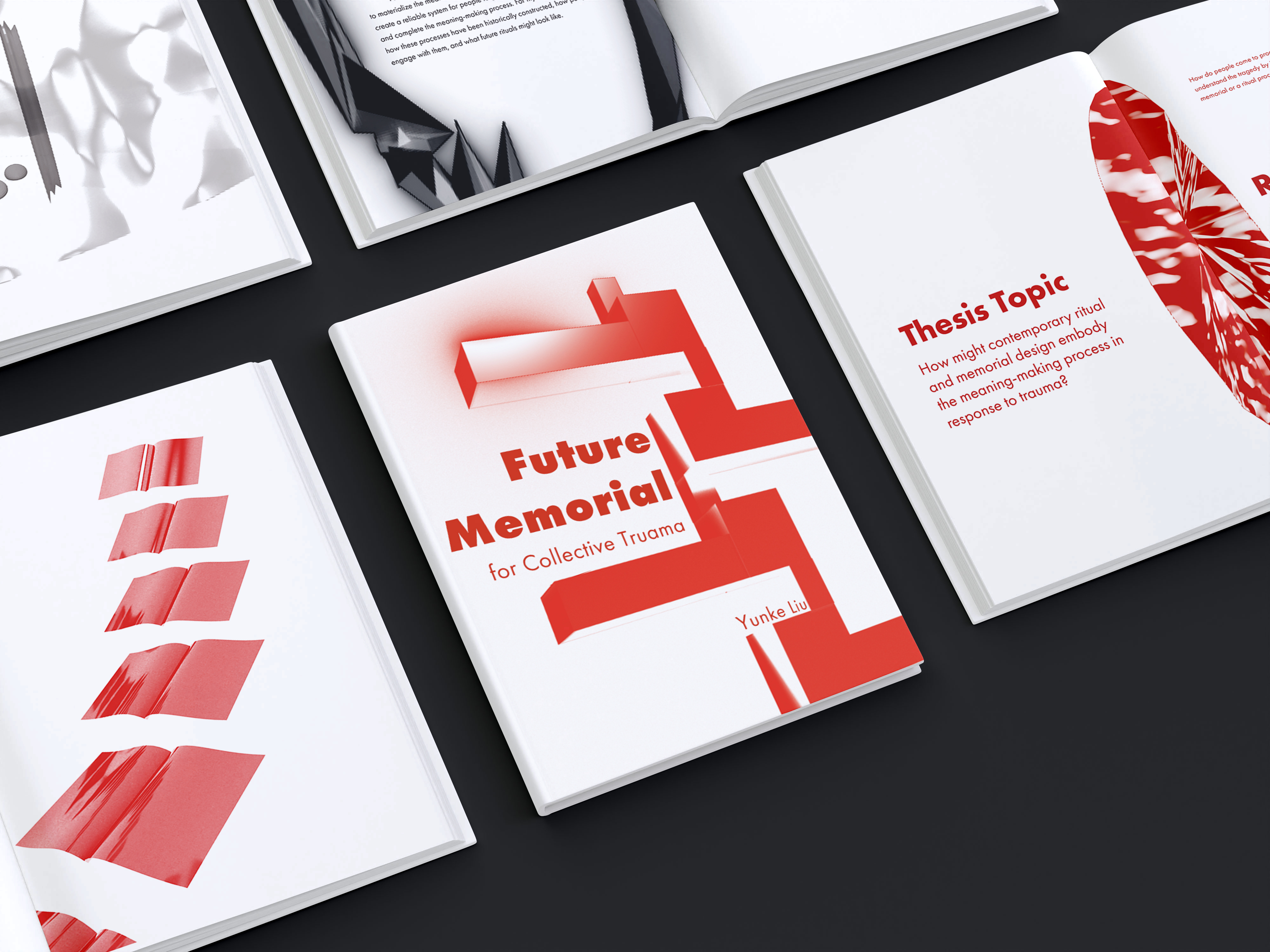Future Memorial for Collective Trauma
Yunke Liu
Experiencing or witnessing traumatic events may cause a profound negative influence on personal well-being. People may sink into despair. To recover, they need to construct a meaningful understanding of their world, and the traumatic experience. This process is called meaning-making. From the beginning of human civilization, ritual plays an essential role in facilitating this meaning-making process — take for example, funerals and silent tributes. Furthermore, ritual design generally contains a memorial monument to materialize the meaning. These two interventions, ritual and memorial, create a reliable system for people to gather together with social support and complete the meaning-making process. For my thesis, I am researching how these processes have been historically constructed, how people engage with them, and what future rituals might look like.
Virtual Memorial for Covid-19 Video Presentation
Conventionally, a public memorial for collective trauma holds several functions, such as a carrier of the losses, a public space to gather, and an educational platform to commemorate the collective trauma. This virtual memorial will also serve these functions to substitute physical memorial while physical, social gathering is impossible. Conventional memorials will serve mainly at a macroscopic scale, which visitors can understand the trauma better and commemorate the losses as a whole. Thus there is only a little space for relatives and friends to mourn the specific person. Therefore, this virtual memorial will include a microscopic perspective for intimate commemoration beyond those essential communal functions.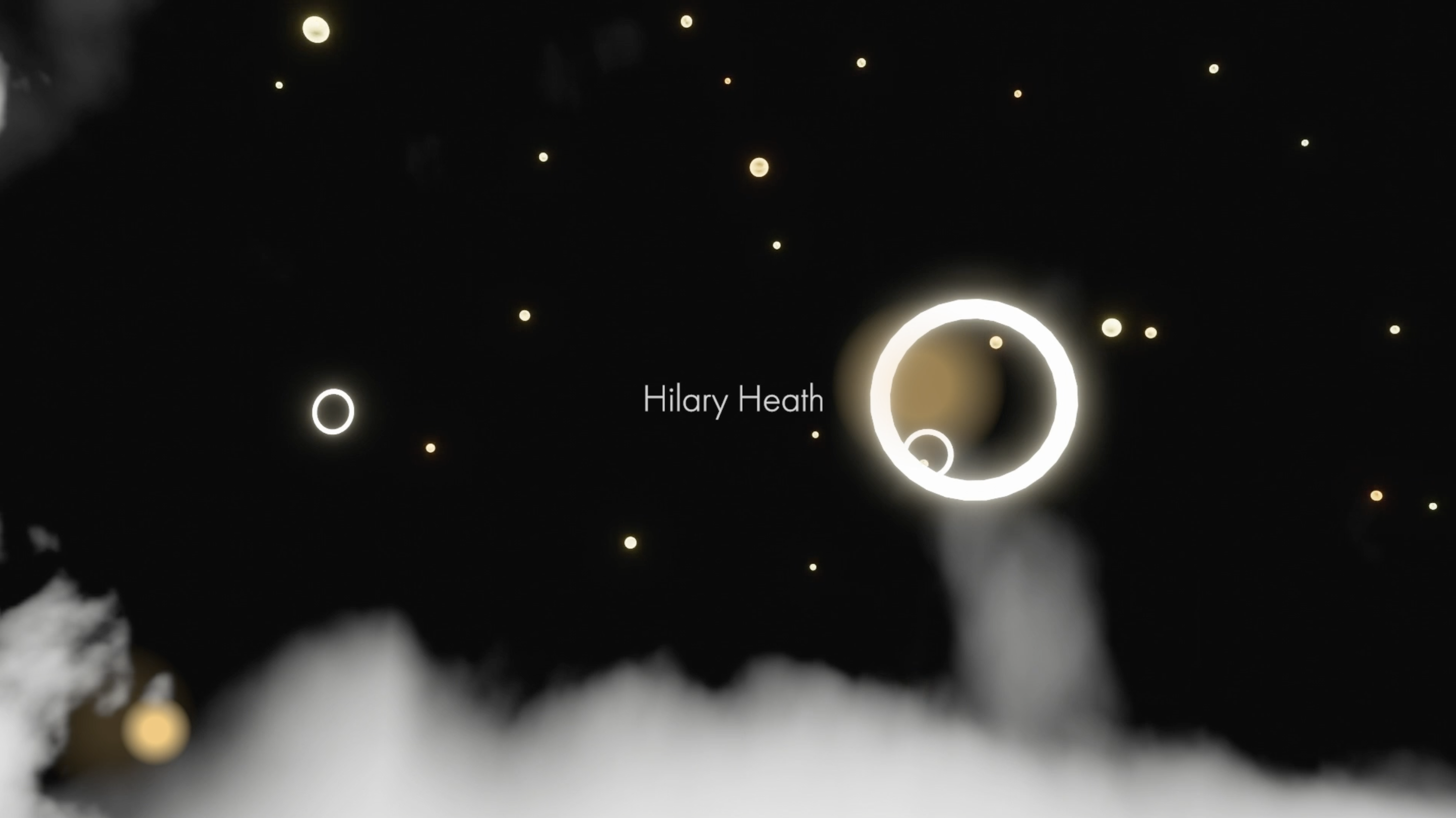
Public Mourning Space
Inside the virtual memorial, All the deceased people will be presented as static white rings. Visitors may float in the space to view the deceased by clicking on each ring. If a visitor is a relative or a friend of the deceased, he will get a passcode to go inside the deceased's personal library. Inside the personal library, there will be four mirrors, each connected to the deceased person's photo, audio, story, and video library. Inside the mirror, authorized visitors may view or add photo/audio/story/video of the deceased to enrich the library for themselves as well as other authorized visitors to mourn the deceased.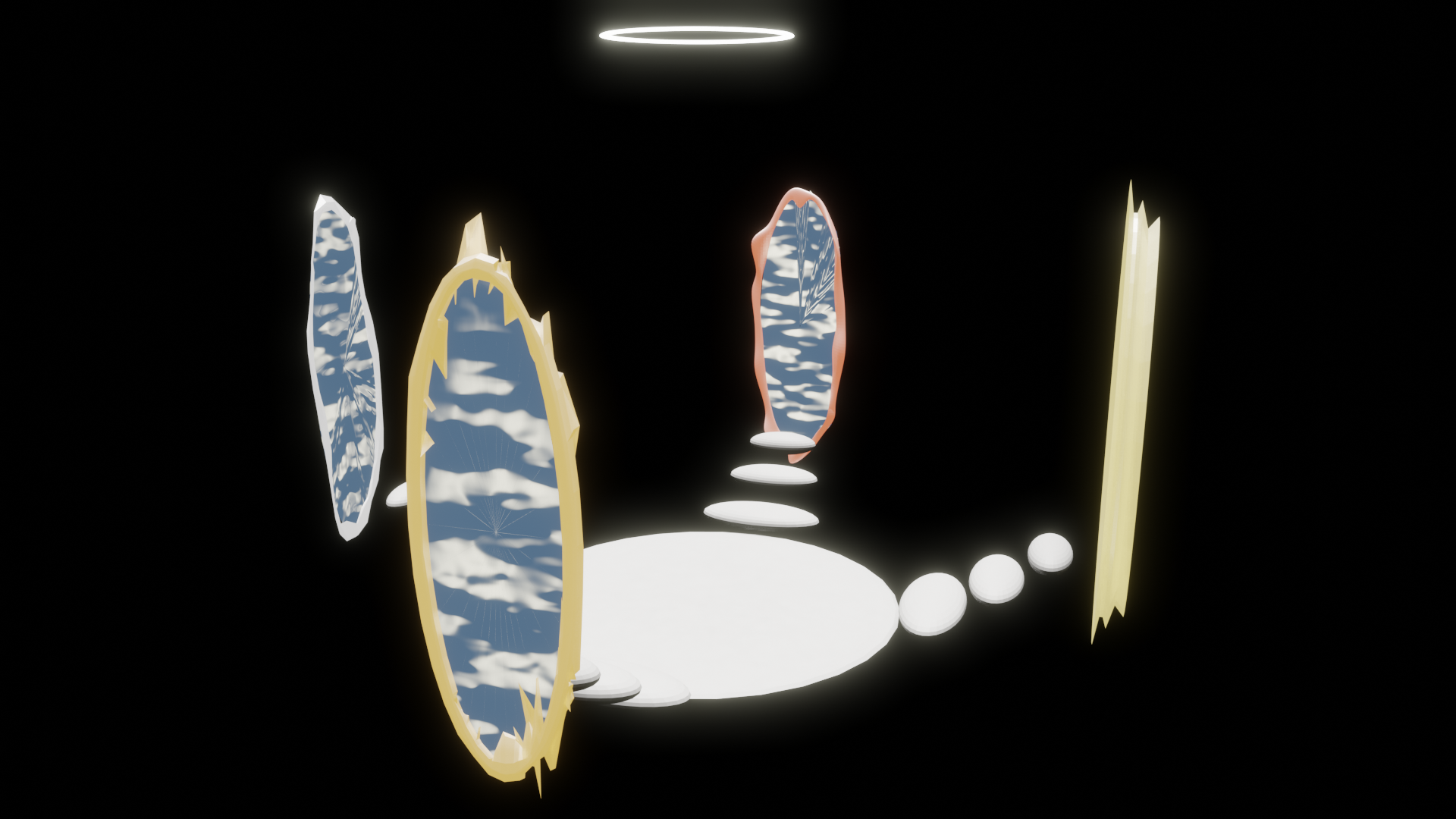
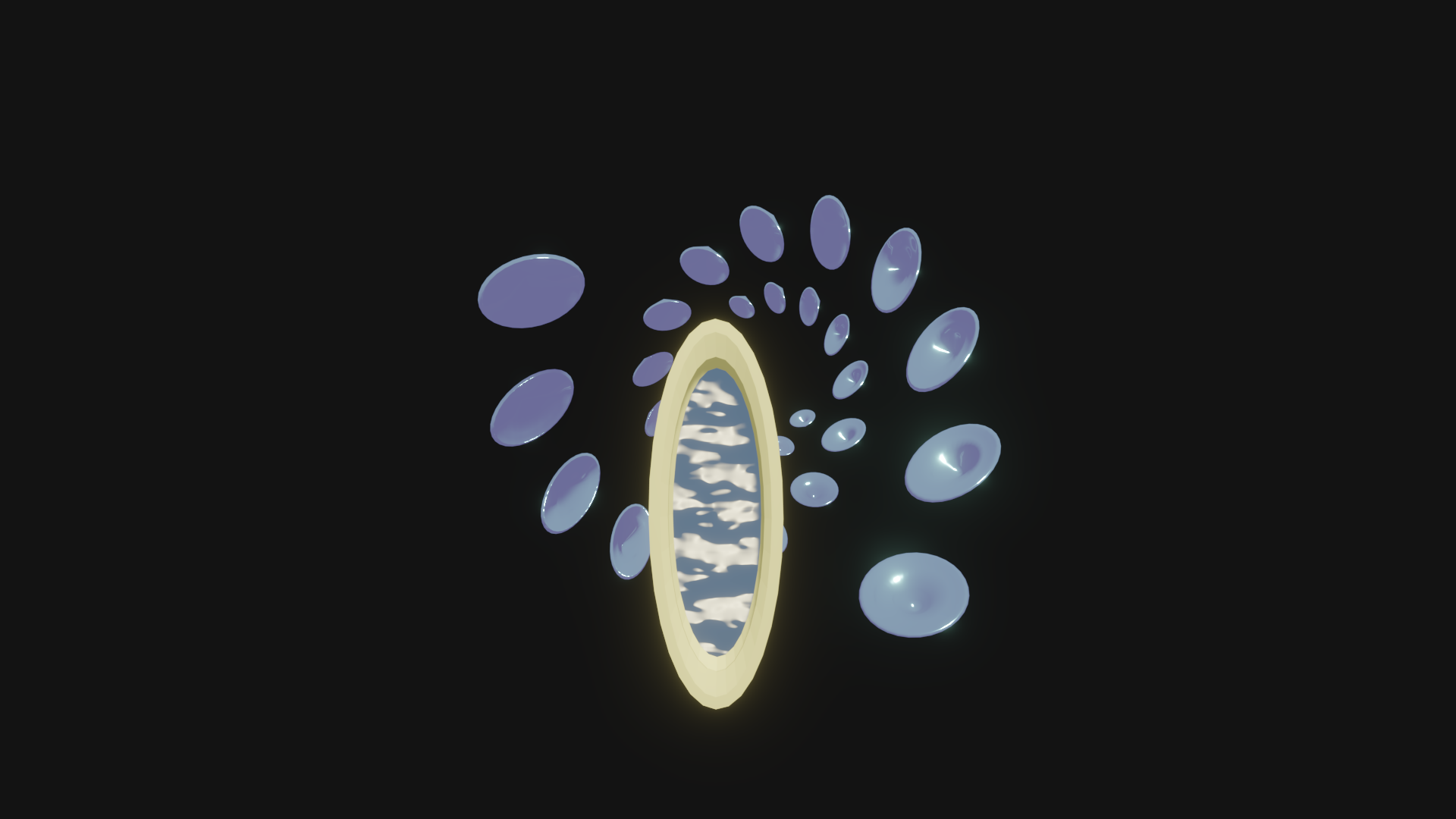

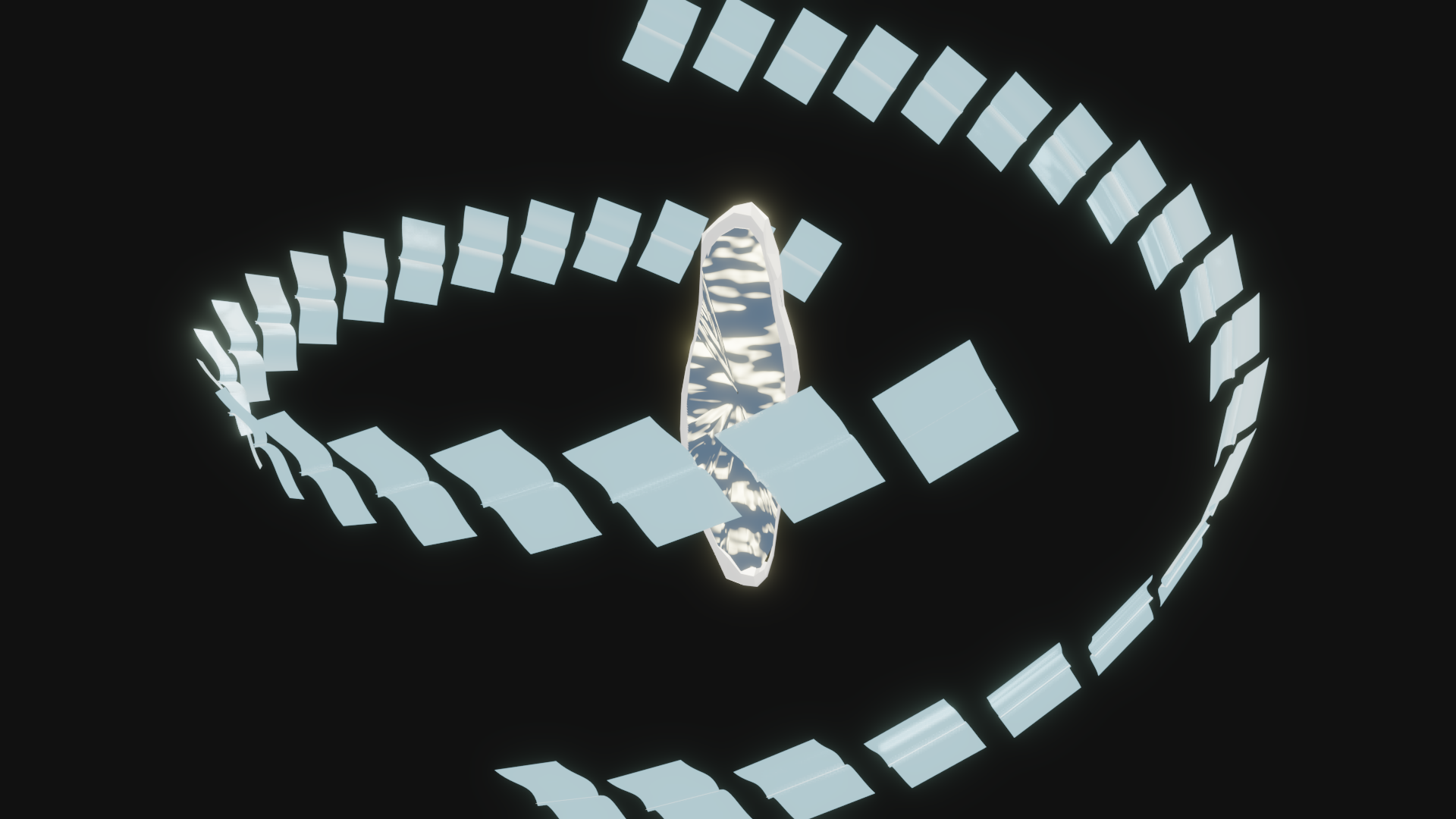

Personal Library
With more related people uploading their memories, the elements will fulfil the space, which may enrich the memory for you to make meaning out of.
